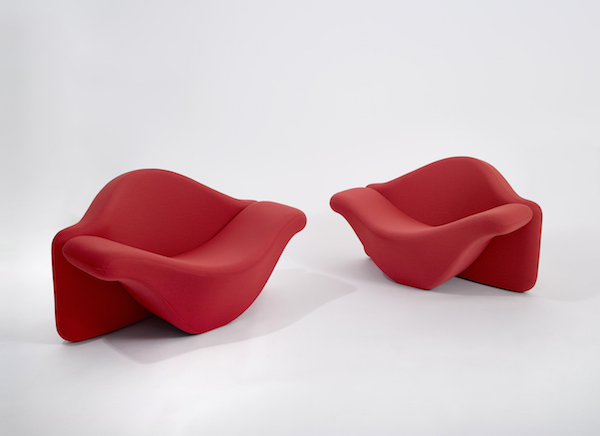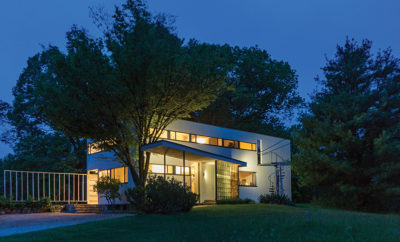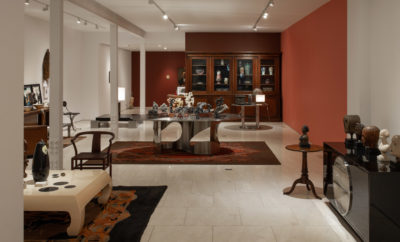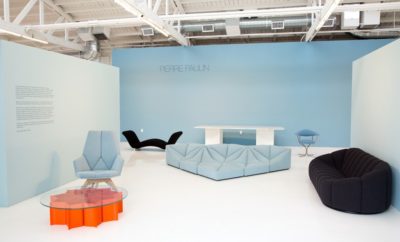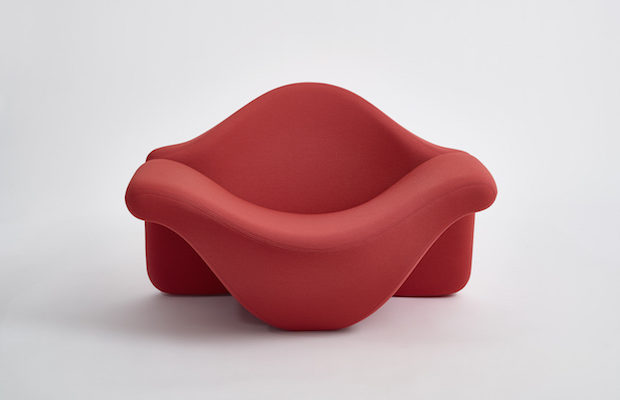 Photography by Andy Romer, Courtesy of Demisch Danant
Photography by Andy Romer, Courtesy of Demisch Danant
Design
Innovations II at Demisch Danant Shows Designs that Evoke Space-Age “Cool”
For more than a decade the New York gallery Demisch Danant has been enthusiastically filling in the landscape of modern French design, showing work by such stars as Pierre Paulin whose painted aluminum and smoked glass Flower Table was commissioned by Georges Pompidou for the Élysée Palace or Olivier Mourgue whose molded fiberglass Bouloum chair is shaped like a welcoming, human-scale paper doll lounging on the floor. Both of those objects are included in Innovation: made in France II, on view through July 1, which concentrates on the revolutionary period between 1965 and 1975 when there was a rich crossover between technology and art in the design world.
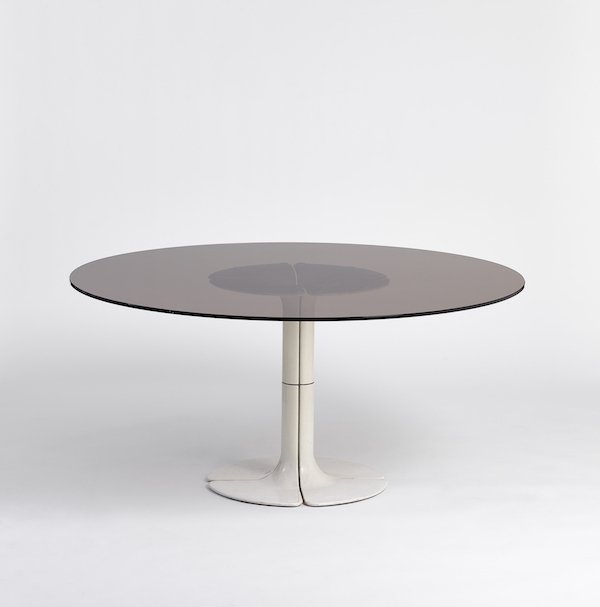
Pierre Paulin, “Flower Table,” Courtesy Demisch Danant, Photography by Andy Romer
In order to present the design story for that time, the gallery has introduced the famous industrial designer Roger Tallon, known for mopeds, watches, and tableware as well as the Corail and the Eurostar (his ski boots and portable television are on view in the show). Tallon was educated as an engineer and carried the discipline forward into all his projects; even when he designed furniture, he was thinking in terms of functionality, of how things work, often translating advances in technology or material from one project to the next.
You can see this in the clean lines of Tallon’s 1972 modular lighting systems in which the components resemble microphone shapes. The simple geometric volumes link back to the prewar Bauhaus values but the structural approach–all the units were built with the intention that they could be dismantled and recombined–propels the work forward and ahead of its time. In the gallery, a small collection of his chairs demonstrates how Tallon reached inside his experience in industry to strengthen household objects for heavier use.

Roger Tallon, “Micro Floor Lamp,” Courtesy Demisch Danant, Photography by Thierry Depagne
The molded plywood body of his 1960 bucket-shaped Wimpy chair was elegantly held together with four assembly screws and its legs, made from pressurized aluminum, were constructed to withstand wear and tear in Paris’s first hamburger joint. Almost two decades after that, his Medius swivel chair used materials and processes from the automotive industry, with the bright green polyurethane padding that gave the piece the puckish look of a wayward robot.
Tallon’s most poetic design, the 1964 chrome cast steel spiral staircase (the one on exhibit belonged to his friend, the artist César) with ten cantilevered and pedal-shaped steps, embodies his streamlined aesthetic as well as the vortex of his energy.
The show also includes a number of works by less well-known avant-garde designers of the sixties who used synthetic materials in new ways and new combinations. Bernard Govin and Christian Adam molded polyurethane foam into loungy, close-to-the ground, space-age seating and François Français and Jean Dudon experimented with undulating lines for playfully transparent Plexiglas chairs. Jean-Pierre LaPorte used fiberglass and foam to create large, ribbon-like, sculptural pieces which, even today, forty-five years later, seem psychedelically protean. Looking across the collection which represents an ethos of that era, it’s easy to agree with Stephane Danant who said wistfully, “That time, it seems cooler than ours.”


